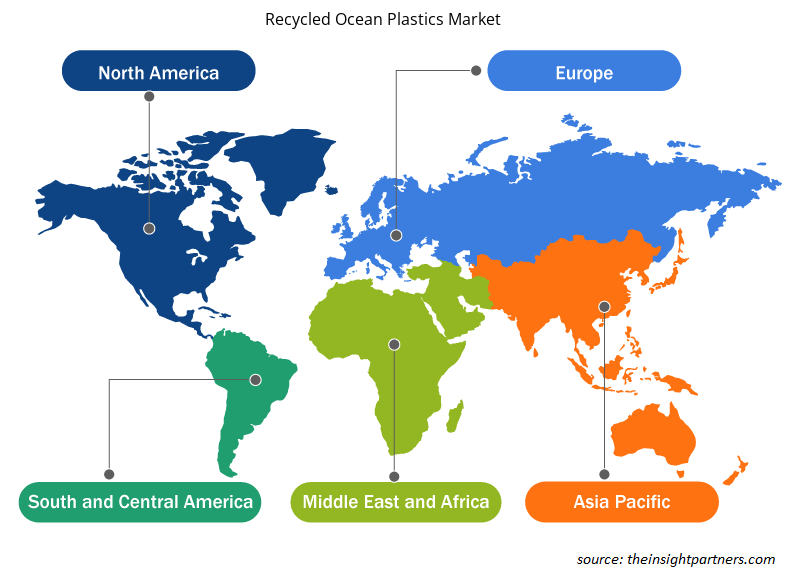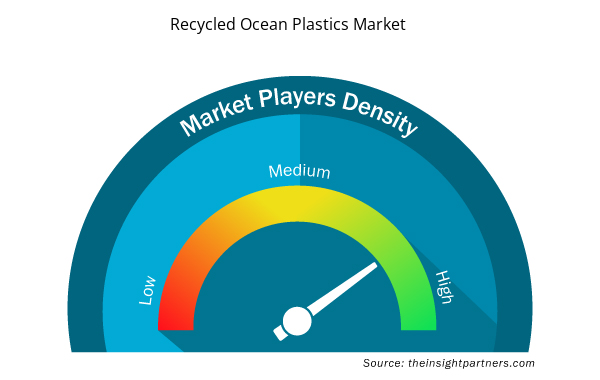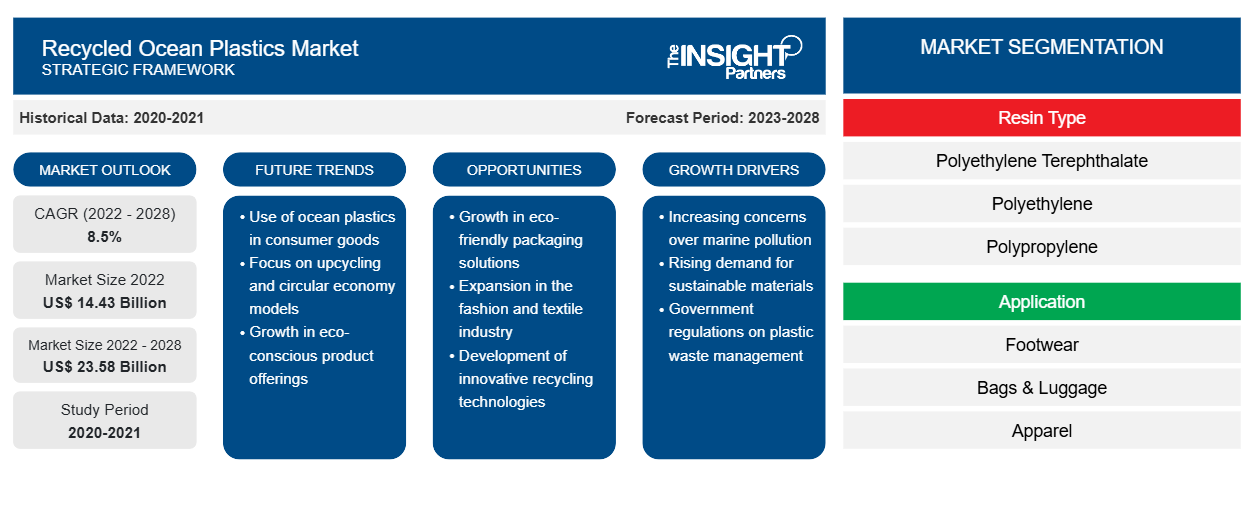2022 年再生海洋塑料市场规模价值为 144.3291 亿美元,预计 2022 年至 2028 年的复合年增长率为 8.5%。CAGR of 8.5% from 2022 to 2028.
塑料污染是主要问题之一,因为它对生物体有不利影响。每年都有大量塑料垃圾被倾倒到海洋和水道中,破坏了海洋生态系统。因此,制造商非常重视回收海洋塑料垃圾,并利用这些塑料生产有用的产品,如鞋类、袋子、行李箱、钱包和衣服。
2021 年,亚太地区占据了全球再生海洋塑料市场的最大收入份额。亚太地区的市场分为印度、中国、澳大利亚、日本、韩国和亚太地区其他地区。该地区再生海洋塑料市场的增长受到快速扩张的时尚产业、不断增长的人口以及该地区消费者对可持续解决方案的认识不断提高的推动。中国和印度是人口增长最快的国家之一。由于人口不断增长,该地区的鞋类、包装和建筑行业正在迅速发展。区域制造商通过生产环保产品减少碳足迹的举措日益增多,也推动了该地区再生海洋塑料市场的增长。eco-friendly products also fuel the recycled ocean plastics market growth in the region.
定制此报告以满足您的需求
您可以免费定制任何报告,包括本报告的部分内容、国家级分析、Excel 数据包,以及为初创企业和大学提供优惠和折扣
- 获取此报告的关键市场趋势。这个免费样品将包括数据分析,从市场趋势到估计和预测。
COVID-19 疫情对海洋塑料再生利用市场的影响
在 COVID-19 疫情爆发之前,鞋类、服装、包装和建筑行业对可持续和环保材料的需求不断增长,推动了对再生海洋塑料的需求。然而,在 2020 年,各国政府实施封锁以控制 SARS-CoV-2 感染的蔓延,导致塑料回收单位停止运营,造成再生海洋塑料短缺。根据 GA Circular 发布的一份报告,印度、越南和菲律宾 80% 的回收单位在 2020 年初关闭,导致再生塑料严重短缺。这对再生海洋塑料市场的增长产生了不利影响。
2021年,许多经济体恢复了运营。各国政府放宽了先前实施的限制,允许制造商满负荷运转。这一因素对塑料回收活动产生了积极影响。许多政府和非政府组织正在建设强大的废物管理基础设施,以支持循环经济并最大限度地减少塑料废物对海洋生态系统的威胁。这一因素将在预测期内推动对再生海洋塑料的需求。
市场洞察
越来越多地推出由回收海洋塑料制成的产品
塑料污染是一个紧迫的全球挑战,因为它对生物构成了重大威胁。根据联合国教育、科学及文化组织海洋素养门户网站提供的统计数据,塑料废物约占海洋污染总量的 80%,每年约有 800-1000 万公吨 (MMT) 的塑料流入海洋。此外,预计未来海洋中的微塑料量将大幅增加。尽管如此,许多国家对海洋塑料污染的认识有所提高,政府和监管机构正在采取措施回收这些塑料。许多公司正在推出创新且有吸引力的产品,如鞋类、手提包和钱包、太阳镜和服装,使用回收的海洋塑料来实现其可持续发展目标并减少其整体环境足迹。所有这些因素都推动了回收海洋塑料市场的增长。
树脂类型洞察
根据树脂类型,全球再生海洋塑料市场细分为聚对苯二甲酸乙二醇酯 (PET)、聚乙烯 (PE)、聚丙烯 (PP)、聚苯乙烯 (PS) 等。2021 年,聚对苯二甲酸乙二醇酯细分市场占据了最大的市场份额。由于聚对苯二甲酸乙二醇酯 (PET) 重量较重且能够保持形状,因此很容易从海洋和水道中提取,这促进了该细分市场的市场增长。此外,箱包和鞋类应用对再生海洋 PET 的需求不断增长也推动了该地区市场的增长。
应用程序洞察
根据应用,全球再生海洋塑料市场细分为鞋类、箱包、服装、建筑材料等。服装领域在 2021 年占据了最大的市场份额。时尚行业对服装的需求不断增长以及全球人口的增长预计将在未来几年推动纺织行业对再生海洋塑料的需求。
Aquafil SpA、BIONIC、Tide Ocean SA、Oceanworks、Textil Santanderina、Envision Plastics、OceanYarn、Waste2Wear、Unifi, Inc. 和 SABIC 是再生海洋塑料市场的参与者之一。这些公司正在对研发进行大量投资,以开发创新产品来满足新兴的消费者需求。市场参与者专注于提供高质量的产品以满足客户需求。
再生海洋塑料市场区域洞察
Insight Partners 的分析师已详细解释了预测期内影响再生海洋塑料市场的区域趋势和因素。本节还讨论了北美、欧洲、亚太地区、中东和非洲以及南美和中美洲的再生海洋塑料市场细分和地理位置。

- 获取再生海洋塑料市场的区域特定数据
再生海洋塑料市场报告范围
| 报告属性 | 细节 |
|---|---|
| 2022 年市场规模 | 144.3亿美元 |
| 2028 年市场规模 | 235.8亿美元 |
| 全球复合年增长率(2022 - 2028) | 8.5% |
| 史料 | 2020-2021 |
| 预测期 | 2023-2028 |
| 涵盖的领域 | 按树脂类型
|
| 覆盖地区和国家 | 北美
|
| 市场领导者和主要公司简介 |
|
再生海洋塑料市场参与者密度:了解其对业务动态的影响
再生海洋塑料市场正在快速增长,这得益于终端用户需求的不断增长,而这些需求又源于消费者偏好的不断变化、技术进步以及对产品优势的认识不断提高等因素。随着需求的增加,企业正在扩大其产品范围,进行创新以满足消费者的需求,并利用新兴趋势,从而进一步推动市场增长。
市场参与者密度是指在特定市场或行业内运营的企业或公司的分布情况。它表明在给定市场空间中,相对于其规模或总市场价值,有多少竞争对手(市场参与者)存在。
在再生海洋塑料市场运营的主要公司有:
- Aquafil 公司
- 仿生
- 潮汐海洋 SA
- 海洋工程
- 圣安德烈娜纺织公司
免责声明:上面列出的公司没有按照任何特定顺序排列。

- 了解再生海洋塑料市场的主要参与者概况
报告亮点
- 再生海洋塑料市场的渐进式行业趋势可帮助参与者制定有效的长期战略
- 发达市场和发展中市场采用的业务增长战略
- 2020 年至 2028 年再生海洋塑料市场的定量分析
- 全球对回收海洋塑料的需求估计
- 波特五力分析说明了行业内买家和供应商的效力
- 了解竞争市场状况的最新发展
- 市场趋势和前景以及推动和抑制再生海洋塑料市场增长的因素
- 通过强调支撑商业利益的市场策略来协助决策过程,从而推动海洋塑料再生市场的增长
- 不同节点的海洋塑料再生利用市场规模
- 市场详细概述和细分,以及再生海洋塑料行业动态
- 各地区海洋塑料再生利用市场规模及增长潜力
全球再生海洋塑料市场
全球再生海洋塑料市场按树脂类型分为聚对苯二甲酸乙二醇酯 (PET)、聚乙烯 (PE)、聚丙烯 (PP)、聚苯乙烯 (PS) 等。按应用,市场分为鞋类、箱包、服装、建筑材料等。
公司简介
- Aquafil 公司
- 仿生
- 潮汐海洋 SA
- 海洋工程
- 圣安德烈娜纺织公司
- 远景塑料
- 海洋纱
- 废物利用
- Unifi 公司
- 沙特基础工业公司
- 历史分析(2 年)、基准年、预测(7 年)及复合年增长率
- PEST 和 SWOT 分析
- 市场规模价值/数量 - 全球、区域、国家
- 行业和竞争格局
- Excel 数据集



Report Coverage
Revenue forecast, Company Analysis, Industry landscape, Growth factors, and Trends

Segment Covered
This text is related
to segments covered.

Regional Scope
North America, Europe, Asia Pacific, Middle East & Africa, South & Central America

Country Scope
This text is related
to country scope.
常见问题
Asia Pacific is estimated to register the fastest CAGR in the global recycled ocean plastics market over the forecast period. Many APAC countries, such as China and India, are the world's fastest-growing populations. With a growing population, apparel, footwear, bags and luggage, construction material, and others are growing rapidly in APAC. The apparel industry is expanding in the APAC region because of growing population. The presence of established sectors, such as footwear and construction, in nations such as China, India, Japan, and South Korea has increased the demand for recycled ocean plastics in the region.
The apparel segment held the largest share of the market in 2022. The apparel sector has been experiencing robust growth due to lifestyle changes, growing urban population, and shift in consumer preferences. These factors drive the demand for recycled ocean plastic in the apparel industry. Furthermore, growing trend of recycled fashion, and the ability of plastic to be recycled is boosting the market growth in the apparel industry.
The footwear segment held the largest market share. Footwear is the most recycled post-consumer plastics. Use of recycled ocean plastic in shoe making can help reduce plastic waste and make footwear sustainable. Ethical footwear brands are taking initiatives against plastic waste by creating shoes made from recycled ocean plastic.
The polyethylene terephthalate segment held the largest market share. It is a polymer created by combining two monomers: modified ethylene glycol and purified terephthalic acid. Polyethylene terephthalate is the most widely used plastic; it is clear, strong, lightweight, and 100% recyclable. Polyethylene recycled plastics can be identified by recycling code#1; as they have a short lifespan, it is easy to recycle them.
The major players operating in the global recycled ocean plastics market are Aquafil S.p.A.; BIONIC; Tide Ocean SA; Oceanworks; Textil Santanderina; Envision Plastics; OceanYarn; Waste2Wear; Unifi, Inc.; and SABIC.
In 2022, Asia Pacific held the largest share of the global recycled ocean plastics market. The rise in the number of textile industries would cater the demand of recycled ocean plastics in the region. The region is also flourishing owing to presence of manufacturing facilities and cheap labor.
Trends and growth analysis reports related to Chemicals and Materials : READ MORE..
The List of Companies - Recycled Ocean Plastics Market
- Aquafil S.p.A.
- BIONIC
- Tide Ocean SA
- Oceanworks
- Textil Santanderina
- Envision Plastics
- OceanYarn
- Waste2Wear
- Unifi, Inc.
- SABIC
The Insight Partners performs research in 4 major stages: Data Collection & Secondary Research, Primary Research, Data Analysis and Data Triangulation & Final Review.
- Data Collection and Secondary Research:
As a market research and consulting firm operating from a decade, we have published and advised several client across the globe. First step for any study will start with an assessment of currently available data and insights from existing reports. Further, historical and current market information is collected from Investor Presentations, Annual Reports, SEC Filings, etc., and other information related to company’s performance and market positioning are gathered from Paid Databases (Factiva, Hoovers, and Reuters) and various other publications available in public domain.
Several associations trade associates, technical forums, institutes, societies and organization are accessed to gain technical as well as market related insights through their publications such as research papers, blogs and press releases related to the studies are referred to get cues about the market. Further, white papers, journals, magazines, and other news articles published in last 3 years are scrutinized and analyzed to understand the current market trends.
- Primary Research:
The primarily interview analysis comprise of data obtained from industry participants interview and answers to survey questions gathered by in-house primary team.
For primary research, interviews are conducted with industry experts/CEOs/Marketing Managers/VPs/Subject Matter Experts from both demand and supply side to get a 360-degree view of the market. The primary team conducts several interviews based on the complexity of the markets to understand the various market trends and dynamics which makes research more credible and precise.
A typical research interview fulfils the following functions:
- Provides first-hand information on the market size, market trends, growth trends, competitive landscape, and outlook
- Validates and strengthens in-house secondary research findings
- Develops the analysis team’s expertise and market understanding
Primary research involves email interactions and telephone interviews for each market, category, segment, and sub-segment across geographies. The participants who typically take part in such a process include, but are not limited to:
- Industry participants: VPs, business development managers, market intelligence managers and national sales managers
- Outside experts: Valuation experts, research analysts and key opinion leaders specializing in the electronics and semiconductor industry.
Below is the breakup of our primary respondents by company, designation, and region:

Once we receive the confirmation from primary research sources or primary respondents, we finalize the base year market estimation and forecast the data as per the macroeconomic and microeconomic factors assessed during data collection.
- Data Analysis:
Once data is validated through both secondary as well as primary respondents, we finalize the market estimations by hypothesis formulation and factor analysis at regional and country level.
- Macro-Economic Factor Analysis:
We analyse macroeconomic indicators such the gross domestic product (GDP), increase in the demand for goods and services across industries, technological advancement, regional economic growth, governmental policies, the influence of COVID-19, PEST analysis, and other aspects. This analysis aids in setting benchmarks for various nations/regions and approximating market splits. Additionally, the general trend of the aforementioned components aid in determining the market's development possibilities.
- Country Level Data:
Various factors that are especially aligned to the country are taken into account to determine the market size for a certain area and country, including the presence of vendors, such as headquarters and offices, the country's GDP, demand patterns, and industry growth. To comprehend the market dynamics for the nation, a number of growth variables, inhibitors, application areas, and current market trends are researched. The aforementioned elements aid in determining the country's overall market's growth potential.
- Company Profile:
The “Table of Contents” is formulated by listing and analyzing more than 25 - 30 companies operating in the market ecosystem across geographies. However, we profile only 10 companies as a standard practice in our syndicate reports. These 10 companies comprise leading, emerging, and regional players. Nonetheless, our analysis is not restricted to the 10 listed companies, we also analyze other companies present in the market to develop a holistic view and understand the prevailing trends. The “Company Profiles” section in the report covers key facts, business description, products & services, financial information, SWOT analysis, and key developments. The financial information presented is extracted from the annual reports and official documents of the publicly listed companies. Upon collecting the information for the sections of respective companies, we verify them via various primary sources and then compile the data in respective company profiles. The company level information helps us in deriving the base number as well as in forecasting the market size.
- Developing Base Number:
Aggregation of sales statistics (2020-2022) and macro-economic factor, and other secondary and primary research insights are utilized to arrive at base number and related market shares for 2022. The data gaps are identified in this step and relevant market data is analyzed, collected from paid primary interviews or databases. On finalizing the base year market size, forecasts are developed on the basis of macro-economic, industry and market growth factors and company level analysis.
- Data Triangulation and Final Review:
The market findings and base year market size calculations are validated from supply as well as demand side. Demand side validations are based on macro-economic factor analysis and benchmarks for respective regions and countries. In case of supply side validations, revenues of major companies are estimated (in case not available) based on industry benchmark, approximate number of employees, product portfolio, and primary interviews revenues are gathered. Further revenue from target product/service segment is assessed to avoid overshooting of market statistics. In case of heavy deviations between supply and demand side values, all thes steps are repeated to achieve synchronization.
We follow an iterative model, wherein we share our research findings with Subject Matter Experts (SME’s) and Key Opinion Leaders (KOLs) until consensus view of the market is not formulated – this model negates any drastic deviation in the opinions of experts. Only validated and universally acceptable research findings are quoted in our reports.
We have important check points that we use to validate our research findings – which we call – data triangulation, where we validate the information, we generate from secondary sources with primary interviews and then we re-validate with our internal data bases and Subject matter experts. This comprehensive model enables us to deliver high quality, reliable data in shortest possible time.


 获取此报告的免费样本
获取此报告的免费样本